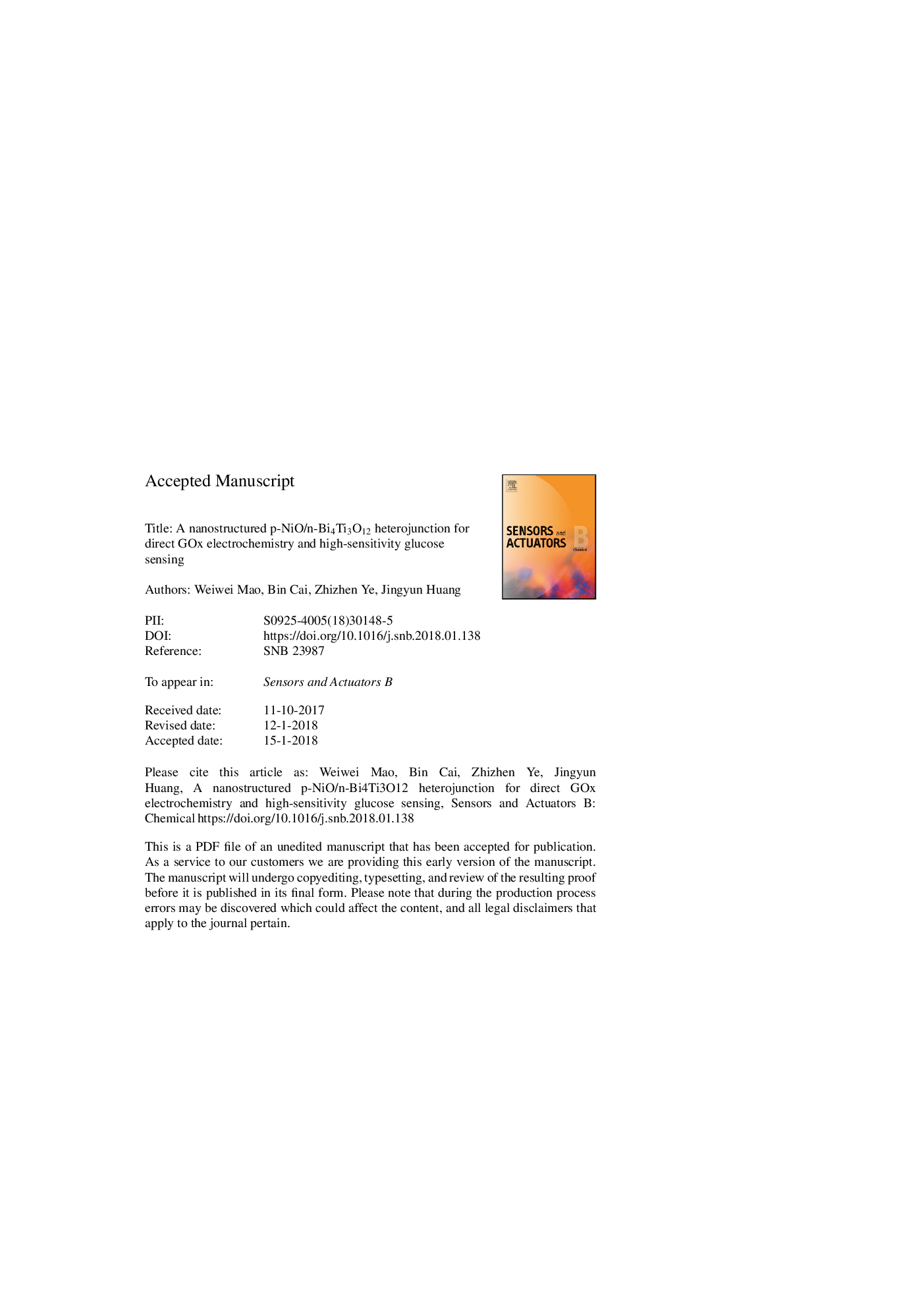| Article ID | Journal | Published Year | Pages | File Type |
|---|---|---|---|---|
| 7140602 | Sensors and Actuators B: Chemical | 2018 | 27 Pages |
Abstract
A glucose oxidase (GOx) based p-NiO/n-Bi4Ti3O12 sandwich heterojunction was fabricated and explored as a glucose electrochemical sensor. The constructed GOx/p-NiO/n-Bi4Ti3O12 sandwich structure effectively prevents the leakage of GOx. Dandelion-like Bi4Ti3O12 nanowires were directly grown on the titanium foil substrates, and dense NiO nanoparticles were deposited by employing pulsed laser deposition at room temperature. Amperometric measurements towards glucose were carried out, and efficient direct electron transfer was successfully achieved. The enzyme biosensor showed a linear range from 20â¯Î¼M to 3.55â¯mM (Râ¯=â¯0.999) with an ultrahigh sensitivity of 215â¯Î¼Aâ¯mMâ1â¯cmâ2, response time within 2â¯s, low detection limit of 1.26â¯Î¼M (S/Nâ¯=â¯3) and high specificity. The apparent Michaelis-Menten constant (Km app) was estimated to be 0.22â¯mM. Intercrossed nanowires and interconnected pores favor the electrons transfer and the massive GOx loading. Binder-free feature leads to a seamless connection between Bi4Ti3O12 nanowires and the substrate. Co-catalysis of GOx and p-NiO/n-Bi4Ti3O12 heterojunction plays a synergetic role in gaining performance boosts. The GOx based p-NiO/n-Bi4Ti3O12 heterojunction biosensor remedies the limitation of enzyme-based glucose sensor and be potentially applied in practice.
Related Topics
Physical Sciences and Engineering
Chemistry
Analytical Chemistry
Authors
Weiwei Mao, Bin Cai, Zhizhen Ye, Jingyun Huang,
